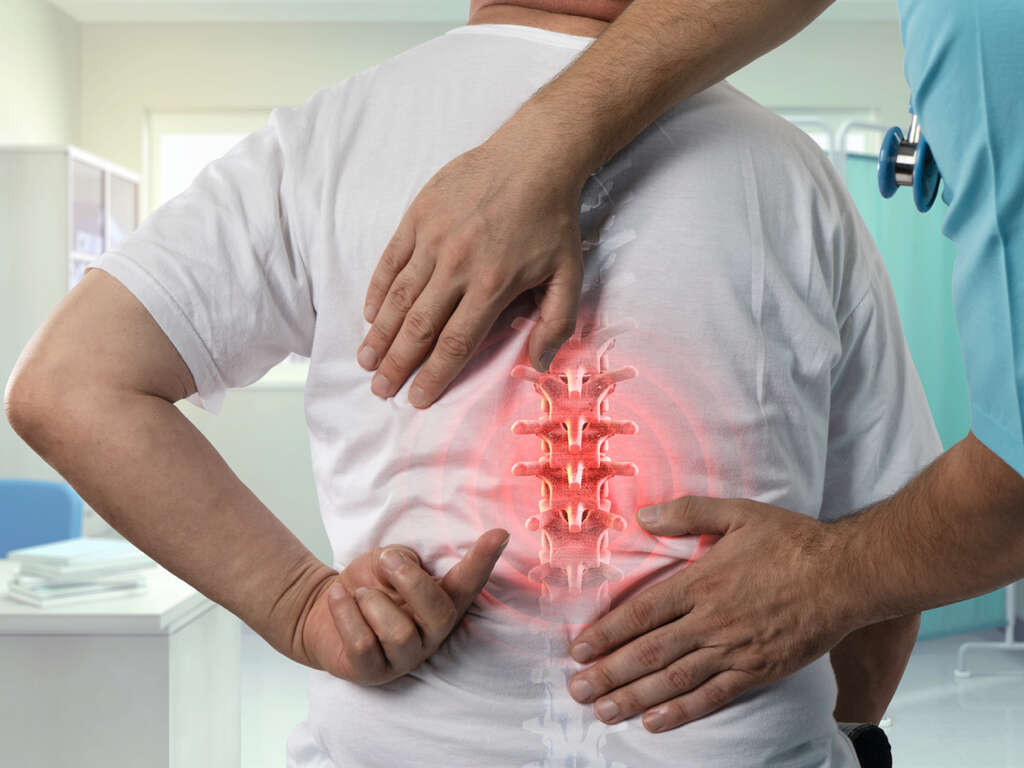10 Symptoms of Parkinson's Disease
Parkinson’s disease is one of the most common neurologic disorders. It is a long-term disease that affects the central nervous system and mostly affects the motor system (movements). The onset is gradual where the symptoms begin and progress slowly over time. While the cause of Parkinson’s disease is yet to be known, many believe that both genetics and environmental factors are involved. However, it has been observed that the risk of Parkinson’s disease is lower among smokers and those who drink coffee or tea. The affected motor symptoms in Parkinson’s disease are due to the death of cells in the substantia nigra (a specific part in the midbrain) leading to low levels of dopamine in these areas.
While the cause of cell death is poorly understood, the buildup of proteins into Lewy bodies are observed in the neurons. The diagnosis of Parkinson’s disease is achieved based on symptoms and tests such as medical imaging of the brain to rule out other causes. While there is no cure for Parkinson’s disease, the treatment and management of this disorder involves the control and improvement of symptoms using anti-Parkinson medication levodopa and dopamine agonists. Medications gradually become less effective as the disease progresses.
Symptom #1: Tremors
One of the earliest symptoms of Parkinson’s disease is tremors. These tremors can be described as a slight tremor or shaking in the finger, thumb, chin, or hand. This tremor usually occurs at rest. Some have described it as “pill-rolling” tremor where the index finger tends to touch the thumb and result in a circular movement.
The term is derived from the similarity of movement in the early pharmaceutical technique of making pills manually. The tremor disappears when the affected individual moves voluntarily or during movement. It mostly begins in one hand and eventually affects both as the disease progresses.
Symptom #2: Bradykinesia
Bradykinesia is a medical term used to describe the slowness of movement and can be seen in all cases of Parkinson’s disease. It occurs as Parkinson’s disease affects the motor planning and initiation of movement. This is linked to difficulties throughout the whole movement process ranging from planning, initiation, and execution of movement. It is one of the most frustrating symptoms of the disease as it can lead to difficulties in performing daily routines such as eating, bathing, and getting dressed.
It can be worsened by emotional stress or other illnesses. Some patients describe it as a feeling of stiffness in the body and limbs. For example, the arms no longer swing during walking. Others may complain that their feet seem as if they were stuck to the floor.

Symptom #3: Rigidity
Rigidity in Parkinson’s disease can be described as a feeling of resistance and stiffness during movement due to increased muscle tone as there is a continuous and excessive contraction of muscles. Medical professionals often describe it as “lead pipe rigidity” if the rigidity is uniform or “cogwheel rigidity” if the rigidity is ratchety.
Many believe that the cogwheel rigidity is a result of the combination of increased tone and tremors. Some patients may also experience joint pain as an initial manifestation of the disease. In the early stages of the disease, the rigidity is often asymmetrical and mostly affects the neck and shoulder muscles before affecting the face and extremities. As the disease progresses, the whole body is affected, reducing the ability of the body to move.
Symptom #4: Postural Instability
Mostly seen in the advanced stages of Parkinson’s disease, postural instability in patients can be dangerous as it causes impaired balance and leads to frequent falls and injuries. It can also cause bone fractures, reduced mobility, and most importantly, loss of self confidence. In the initial stages, postural instability is often absent, especially among younger patients and before the development of symptoms bilaterally.
Among patients with Parkinson’s disease, up to 40% may experience falls. The number of falls may correlate to the severity of the disease.

Symptom #5: Festinating Gait
Parkinsonian gait or festinating gait describes a gait that is often seen among patients with Parkinson’s disease. The word festinating comes from the Latin word “festinare” which means to hurry. This gait is characterized by the patient’s small shuffling steps along with hypokinesia (slowness of movement) and akinesia (loss of movement). Patients affected are often seen to have a reduced walking speed and stride length.
While there is difficulty for the patient to start walking, they also have difficulty stopping after they start. This is caused by muscle hypertonicity. Another characteristic is the forward flexed posture with no swinging of the arms during walking. There are also stops of movement when the patient has to turn to change their course of direction.
Symptom #6: Micrographia
Micrographia is a medical term used to describe a disorder where the features are abnormally small, while the handwriting gets progressively smaller and cramped. Micrographia is commonly associated with disorders that affect the basal ganglia such as Parkinson’s disease. It can be described as an abnormally small handwriting that can be hard to read.
The easiest way to spot micrographia is the smaller letter sizes and crowding of words. In Parkinson’s disease, it occurs due to lack of motor control and difficulty maintaining the scale of movements. It is one of the earlier symptoms of Parkinson’s disease.

Symptom #7: Cognitive Issues
Some patients may experience cognitive issues in the early stages of Parkinson’s disease which increases as the disease progresses. Difficulty in planning, abstract thinking, cognitive flexibility, rule acquisition, inhibition of inappropriate actions, working memory, control of attention, and initiation of appropriate actions may be altered.
There is also slowed processing speed for cognition, impaired perception, impaired recall, and impaired estimation of time. However, there can be improvement if the patient’s recall is aided using cues. Parkinson’s disease also leads to visuospatial difficulties such as issues with facial recognition and perception of the orientation of lines.
Symptom #8: Dementia
A patient with Parkinson’s disease has a higher risk of dementia by up to two to six times compared to the normal population. The likelihood of dementia increases with age and duration of the disease. Dementia lowers the quality of life for both the patients and their caregivers.
It also increases the probability of needing nursing home care and mortality. The disease causes changes in the brain and affect mental functions, memory, and attention. Some of the symptoms of dementia in patients with Parkinson’s disease are muffled speech, changes in memory, difficulty concentrating, issues with judgement, trouble interpreting visual information, delusions that include paranoid ideas, depression, anxiety, irritability, and sleep disturbances.

Symptom #9: Hallucinations or Delusions
Among patients with Parkinson’s disease, up to 50% of patients experience hallucinations or delusions during their course of illness. It may also mean that dementia may soon be starting.
Some of the hallucinations that occur include the “sense of passage” where the individual feels that there is something that quickly passes beside the person, or “sense of presence” where there is a feeling that something or someone is standing near the person. The hallucinations or delusions can also become full blown or vivid with paranoid ideas and visual hallucinations.
Symptom #10: Sleep Issues
In some patients with Parkinson’s disease, sleep issues are a feature that can be worsened due to medications. With sleep issues, patients often experience excessive daytime sleepiness, insomnia, and disturbance in REM (rapid eye movement) sleep. One of the issues patients face is known as REM behavior disorder where affected individuals act out their dreams causing injury to themselves or their bed partner.
REM behavior disorder may occur years before cognitive or motor disorders of Parkinson’s disease. If you notice that your loved one is thrashing around in bed or acting out their dreams when they are deeply asleep, it may be a symptom of Parkinson’s disease.











